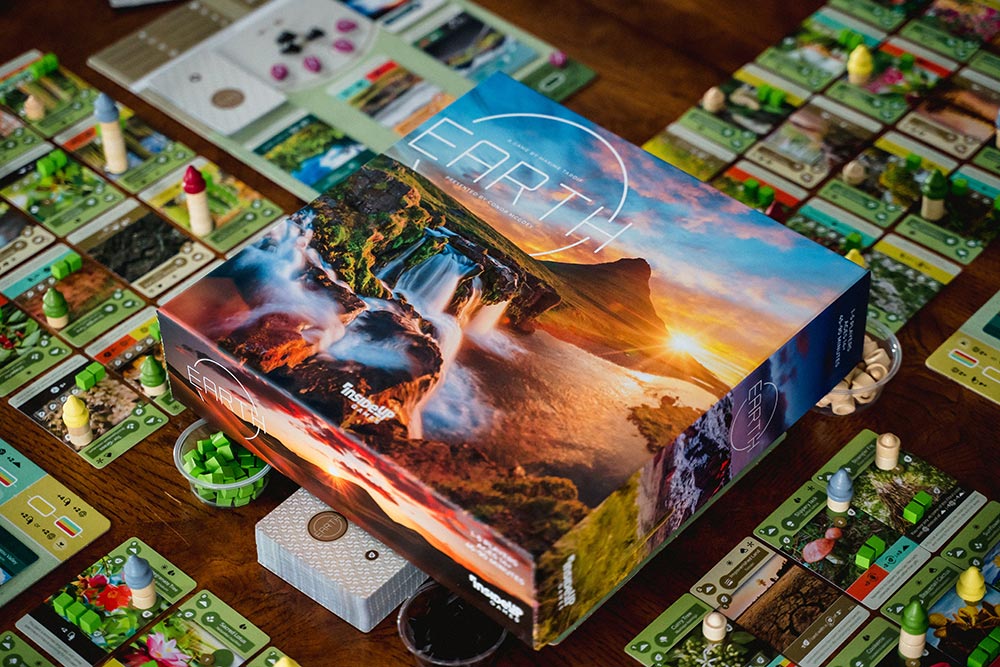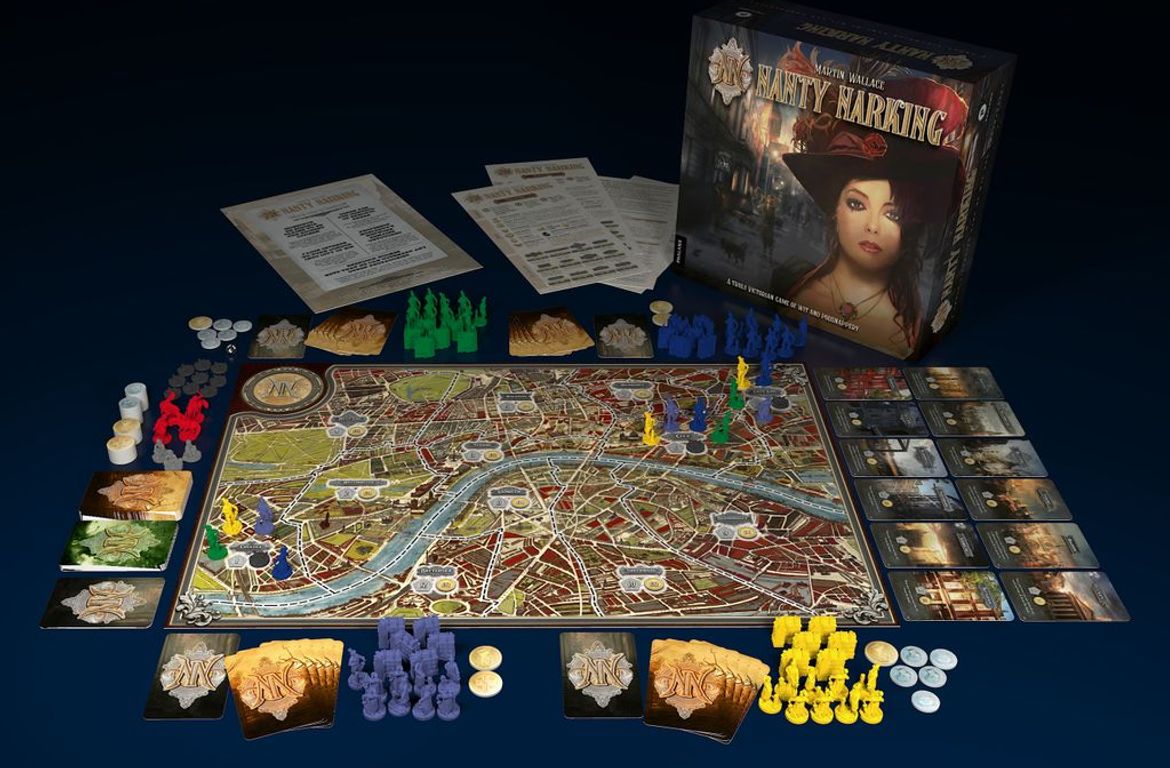
Earth: Istražite Prirodna Čuda planete Zemlje kroz Društvenu Igru
U svijetu društvenih igara, Earth se ističe kao igra koja kombinira ekološku svjesnost, strategiju i prekrasnu umjetnost. Ako ste ljubitelj
You know, I’m not one to believe in coincidences. Sure, random things happen all the time, but when you zoom out and look at the bigger picture, I like to think everything has a purpose.
As I’m writing this diary, part of me is wondering why I ever decided do it. Don’t get me wrong — I love to write, and I’m stoked to share my thoughts on Quibbles with you. It’s just that life’s got me juggling a lot right now, and sometimes it feels like one too many balls in the air.
But hey, if there’s no such thing as a coincidence, maybe there’s a silver lining here. Stress can be a weirdly good thing for me. It’s often in these moments that my mind starts racing, I let my guard down, and maybe, just maybe, I can spark a little inspiration in someone, so let’s dive in!
A Bit of History
Quibbles didn’t just emanate, popping into existence out of nowhere. Sure, the basic idea came to me in just a few minutes, but its roots trace back way earlier. To really get how Quibbles was born, we’ve gotta rewind to my teenage days.
Growing up, I was perpetually in creator mode, obsessed with constructing new concepts, whether through Technic LEGO or makeshift games and gadgets from cardboard my dad brought home. High school introduced a more mature life phase and a pivot towards computer programming. My game creation passion took a backseat, yet a latent desire to create and play never completely vanished.
Discovering classic card games like Royal Draw Cassino during library trips reignited this spark. This traditional, mathematical, and highly engaging fishing game became a lunchtime staple amongst my high school friends. Later, I encountered CuBirds. Its widespread appeal was evident, selling over 100,000 copies globally. This success piqued my curiosity, leaving me to ponder, what made CuBirds resonate so widely?
The pieces of the puzzle came together one night in November 2022. With all four kids tucked in and my girlfriend out and about, I sat down at our living room table, armed with a green Ligretto box, and got to work.
Mathematical Elegance and Quibbles in Design
Despite my love for Royal Draw Cassino, I couldn’t help but perceive a certain lack of elegance in its design, using “elegance” in its mathematical context. I am, after all, half a mathematician. It seemed to me that the game possessed more rules than necessary for optimum enjoyment. Concealed within its intricate structure, I believed, was a cleaner, more streamlined version waiting to be unearthed.
In Royal Draw Cassino, the concept of “building” is pivotal. It allows the amalgamation of several cards to form a virtual one of higher value. This virtual card can then be captured using a single matching card from your hand. This feature is a highlight, offering intriguing choices and a sense of accomplishment when concocting clever combinations. However, with values extending to 14, the calculations can become excessively complex for those not mathematically inclined.
Inspired, I took the Ligretto cards, removed all valued 6 and above, and began experimenting. CuBirds boasts a central marketplace in which players exchange cards. Its unique swapping mechanism makes the game remarkably captivating. With this in mind, I envisioned a game with both a marketplace and Cassino’s building mechanism. Almost immediately, it began to feel game-like. For added depth, I introduced a “reverse building” action: combining multiple cards from your hand to capture a single tabletop card. This brought an interesting dynamic — yet a central question lingered: What’s the objective? Why are we exchanging cards?
I revisited CuBirds. In its brilliance, victory is achieved by collecting seven distinct cards. I adopted a similar approach: In my game, players aim to gather one of each card type.
But how could cards transition from one’s hand to their collection? CuBirds mandates hand sets of specific sizes to move one card to your collection. This seemed a viable mechanism. Admittedly, I began feeling somewhat derivative — but isn’t that the nature of games? Many incorporate mechanisms from their predecessors. Instead of dwelling on it, I chose to embrace and proceed.
The subsequent evening, I introduced the game to a friend from my local game design group. He was impressed. After multiple rounds and rule tweaks, the game began to refine itself, leaning towards elegance. One hiccup was the necessity of a “pass” rule to ensure the game wouldn’t stagnate. However, the added rule lacked the desired elegance. I acknowledged this shortcoming, hopeful for a future refinement.
Broadening the Testing Horizons
At this juncture, I opted to broaden my horizon and engage a wider audience to assess the game’s validity and appeal. I crafted a prototype incorporating engaging 3D creatures I found online, named them “Quibbles” (a nod to Star Trek’s “Tribbles”), and distributed it to around twenty individuals. Swiftly, a cascade of feedback began to flow in. This input prompted the creation of new rule variations, primarily focusing on refining the pass rule. The responses to these modifications were immediate and invaluable, culminating in a tester-proposed pass rule that fit seamlessly.
Approximately a month later, a pattern began to emerge from the feedback. While many initially enjoyed Quibbles, several players found the gameplay repetitive after a few rounds, lacking the ongoing challenge. Despite the majority of feedback being positive, I knew this concern couldn’t be overlooked.
Quibbles was already shaping up to be a minimalist, yet captivating game. I was hesitant to complicate it with unnecessary additions, then during a likely shower epiphany, I considered introducing a card valued at 6. I’d always operated under the assumption that intricate math was off-putting to players, but on a whim, I added it. The results were astonishing. The game’s replayability and intrigue soared. It felt complete.
Final Hurdles to Overcome
However, during testing, a unique challenge presented itself. I observed that certain players, the “hoarders”, would accumulate cards for several rounds before truly participating in the game. This passive strategy somewhat dampened the gaming experience. After experimenting with several potential mechanisms to rectify this, I landed on a solution inspired by CuBirds: allowing players to compel others to discard their hands. This element added a strategic layer, preventing extensive hoarding due to the looming risk of losing one’s hand.
The resolution dawned on me during a moment of reflection on the game’s asymmetry. The game commenced with six cards laid out (values 1 through 6), but players were dealt only three cards. Why this discrepancy? Internally, I yearned for both values to be equal, but feared the implications. To my delight, increasing the hand size didn’t just work; it completely eliminated the initial monotony, enhancing the overall gameplay experience!
What I Learned
Developing Quibbles was one wild ride filled with learnings, a-ha moments, and realizations. Here’s the rundown of what it taught me:
• Strive for elegance: Being a math lover, I was all about finding that sweet elegance in design. It was all about trimming the fat, getting rid of the extra fluff, and focusing on what makes the game pop! Stripping away unnecessary bits led to a game that’s easy on the brain but still packed with fun.
• Feedback is a game changer: I can’t stress enough how much feedback shaped up Quibbles. It was like the game’s magic ingredient, adding flavor and spicing things up. Every piece of advice, whether it was a pat on the back or a point of criticism, was pure gold!
• It’s all in the details: Whether it was slipping in a card valued at 6 or diving into the game’s intricacies, I learned that even the tiniest adjustments can have a massive impact. From countering the strategy of “hoarders” to eliminating initial game monotony, sweating the small stuff brought out Quibbles’ true colors. These nuances didn’t just enhance gameplay; they transformed the entire mood, making everything more vibrant and immersive.
• Embrace inspiration from everywhere: Whether it’s from a classic card game, a box of Ligretto cards, or a random thought in the shower, inspiration can hit you from the most unexpected places! Keeping my mind open to these sparks and weaving them into Quibbles was key to its growth. Sure, the fear of just copying was like a constant shadow, lurking around, but once I realized that creating something new often involves building on the cool stuff that’s already out there, it was like breaking free. It’s all about learning, adapting, tweaking — it’s the essential element that keeps those creative juices flowing!
Creating Quibbles wasn’t just about making a game; it was about juggling intuition and logic, passion and precision, and soaking up loads of learnings. By taking the time to do this “right”, I learned a lot and got a better game for it.

U svijetu društvenih igara, Earth se ističe kao igra koja kombinira ekološku svjesnost, strategiju i prekrasnu umjetnost. Ako ste ljubitelj

U svijetu društvenih igara, rijetko koja igra uspijeva obuhvatiti bogatstvo povijesti, strategije i priče poput Nanty Narkinga. Ova igra, smještena